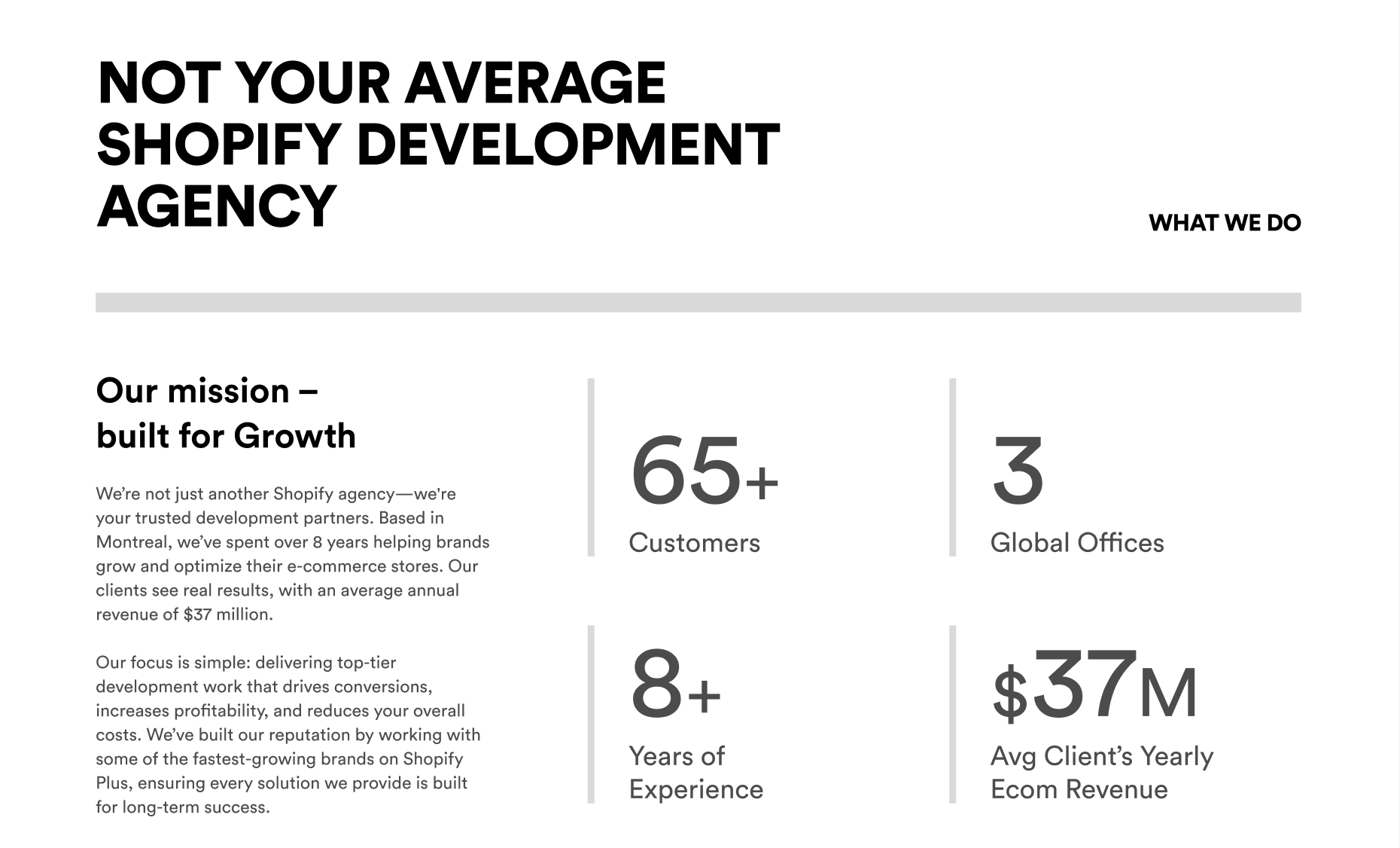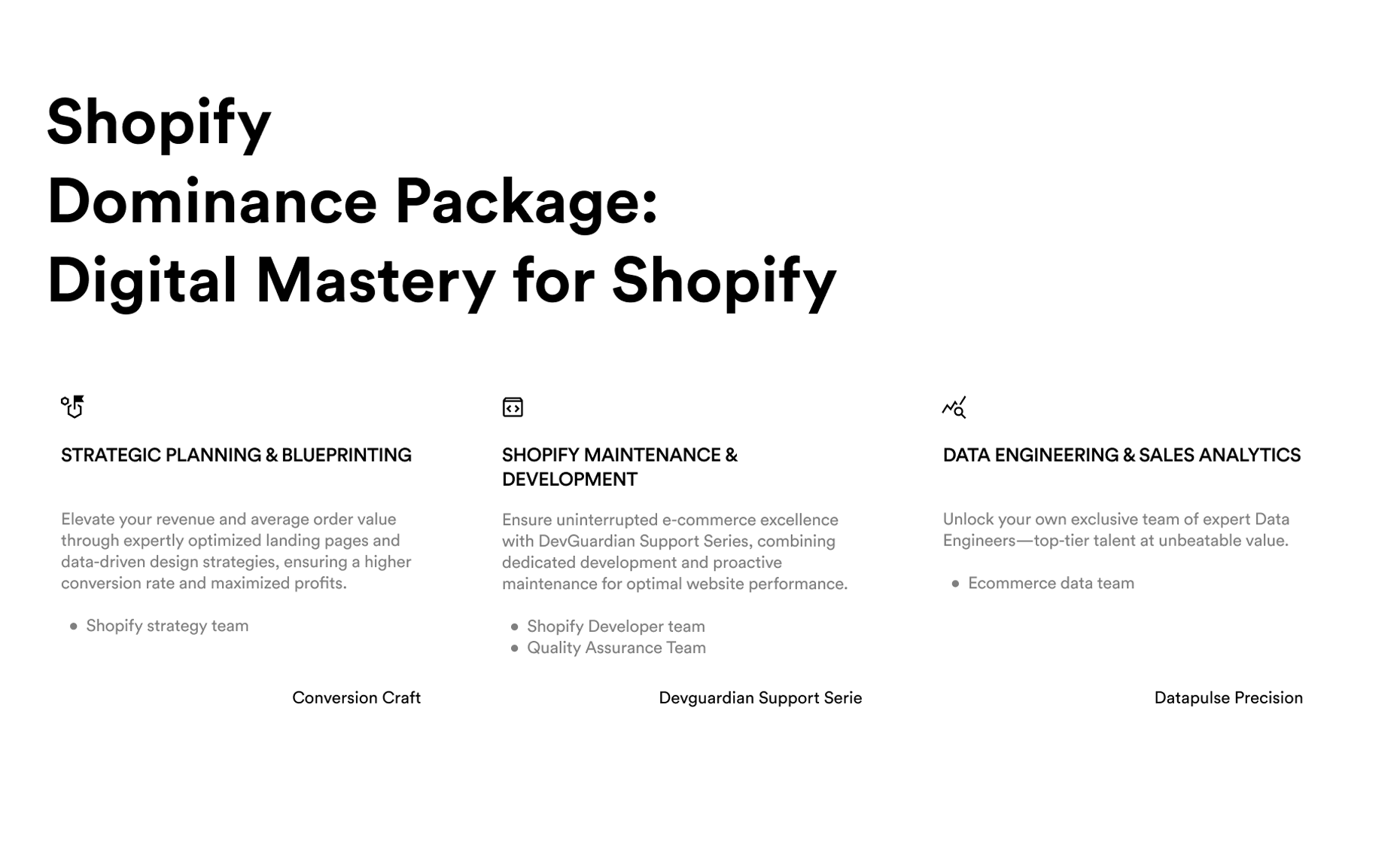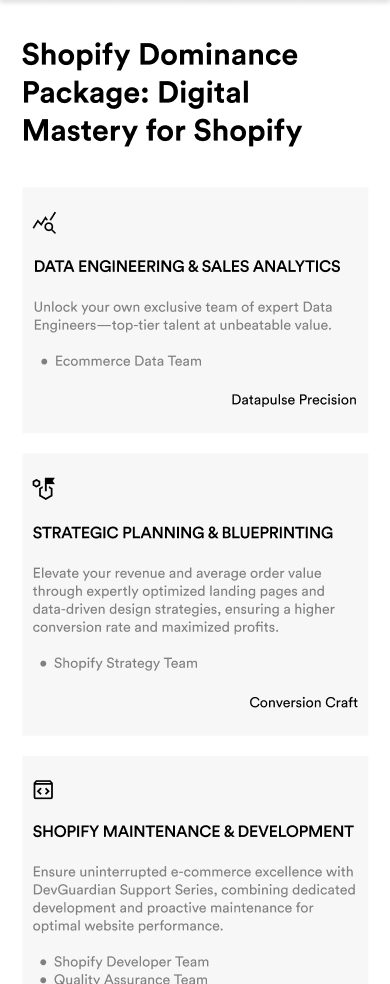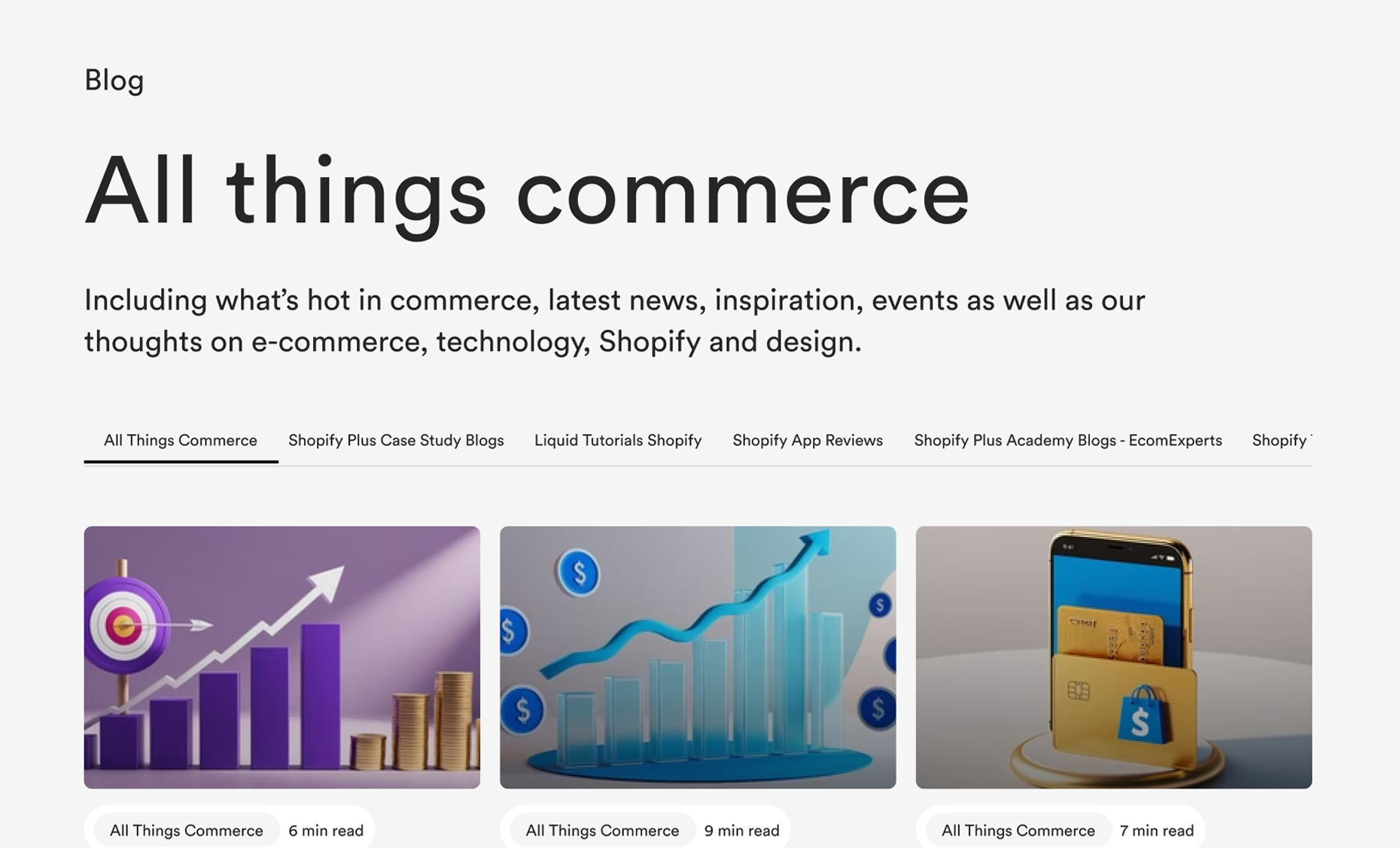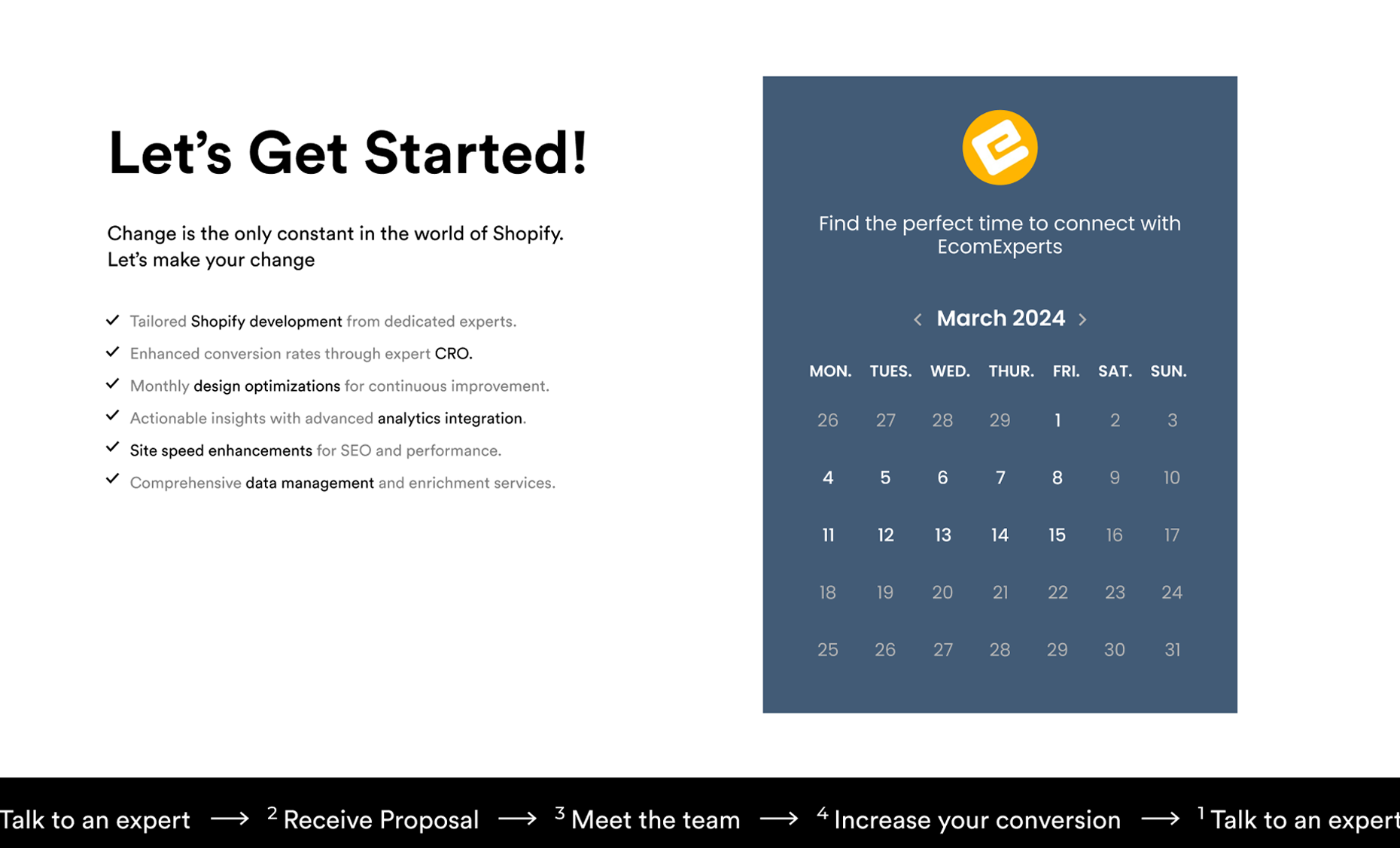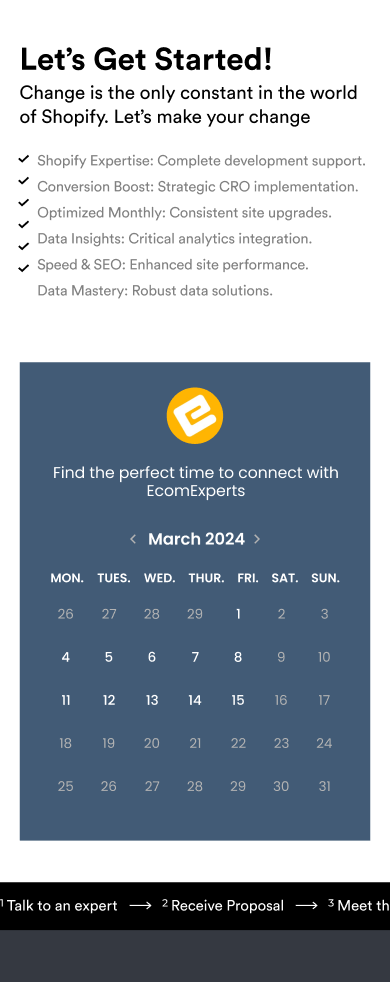Launching a Shopify store is like opening the doors to a new brick-and-mortar shop—only the stakes are higher because your competition isn’t just down the street; it’s global.
In 2024, the e-commerce market is more competitive than ever, and the difference between a store that thrives and one that barely survives often comes down to preparation.
The Importance of a Strong Store Launch
Here’s the thing: If you think you can just set up a Shopify store, throw up a few products, and start raking in sales, you’re in for a rude awakening. The e-commerce world doesn’t work like that anymore. A strong launch is your store’s first impression, and you only get one shot at it.
Nail it, and you’re setting the foundation for long-term success. Miss it, and you might spend the next few months playing catch-up—or worse, watching your investment slowly drain away.
Importance of Preparation
Why is preparation so crucial? Because every detail matters. From your site’s load time to the ease of navigation, to how well your products are described—these factors can either draw customers in or push them away. A well-prepared checklist isn’t just a to-do list; it’s your blueprint for success.
It ensures you’re not missing any critical steps that could cost you sales or, even worse, your reputation. Preparation is about foresight, planning, and setting yourself up to hit the ground running from day one.
Shopify Store Pre-Launch Preparation

The success of your Shopify store hinges on how well you prepare before the actual launch. A solid pre-launch strategy ensures that you’re not just ready to sell, but ready to scale. Here’s how you can lay a strong foundation:
Market Research
Understanding Your Target Audience
Knowing your target audience is more than just identifying who might buy your products—it's about understanding their needs, preferences, and pain points deeply. The better you understand them, the more effectively you can position your products and tailor your messaging to resonate with them.
-
Action Steps: Start by creating detailed customer personas. Tools like Google Analytics and Facebook Audience Insights can help you gather data on demographics, interests, and behaviors.
Dive into forums, social media groups, and customer reviews to get a sense of the language your audience uses and the problems they need solving. Your goal is to get into the mindset of your customers, understanding what drives their purchasing decisions.
Analyzing Competitors and Market Trends
In the e-commerce space, staying ahead of your competitors is critical. By analyzing your competitors, you can identify what works, what doesn’t, and where the gaps are in the market that you can fill.
Understanding market trends ensures that you’re not just following the crowd but setting your store up to lead the pack.
-
Action Steps: Identify your top competitors and analyze their websites, product offerings, pricing, and marketing strategies. Use tools like SEMrush or Ahrefs to uncover their SEO strategies and traffic sources. Explore how they engage with their audience on social media.
Simultaneously, stay updated on industry trends by following e-commerce news, attending webinars, and participating in industry forums. This will help you adapt to changes quickly and position your store to meet emerging demands.
Business Plan Development
Defining Your Niche and Unique Selling Proposition (USP)
Finding a niche allows you to focus on a specific segment of the market, making it easier to connect with your audience.
Your USP is what makes your store stand out from the competition—whether it’s a unique product, a particular brand experience, or exceptional customer service.
-
Action Steps: Identify a market segment that is either underserved or where you can bring something new. Your niche should be specific enough to reduce competition but broad enough to allow for growth. Next, articulate your USP by answering the question: "Why should customers choose my store over others?"
This could be anything from exclusive products to a brand story that resonates with your audience. Your USP should be clear, compelling, and consistent across all your marketing channels.
Choosing the Right Shopify Plan

Overview of Shopify Pricing Plans and Features
Selecting the right Shopify plan is a critical decision that can impact your store’s scalability, functionality, and overall success.
Shopify offers various plans, each designed to cater to different business needs and sizes.
-
Action Steps: Familiarize yourself with Shopify’s different pricing plans—Basic Shopify, Shopify, and Advanced Shopify. Consider the features each plan offers, such as the number of staff accounts, shipping discounts, and reporting capabilities.
For instance, if you’re just starting, the Basic plan might suffice, but if you anticipate rapid growth, investing in the Advanced plan might be more cost-effective in the long run.
Considerations for Selecting the Best Plan for Your Business Needs
Your choice of a Shopify plan should align with your business goals, budget, and anticipated growth. The right plan can help you manage your store more efficiently and provide the tools you need to scale.
It’s important to think not just about what your business needs right now, but what it will need as it grows.
-
Action Steps: Start by evaluating your current business size, including the number of products you plan to sell, expected traffic, and your sales volume projections.
If you’re just launching, the Basic Shopify plan may cover your immediate needs with essential features like unlimited product uploads and sales channels integration.
However, if you’re planning for rapid growth or expect a high volume of transactions, consider the Advanced Shopify plan for its advanced reporting capabilities, lower credit card fees, and access to more staff accounts.
-
Think Long-Term: Consider what features will be necessary as your business expands. For example, the Advanced Shopify plan offers more sophisticated reporting tools and real-time carrier shipping, which can be crucial as your store grows.
It’s also important to factor in potential costs from third-party apps you may need, as these can add up. Choose a plan that not only fits your budget but also provides room to grow without needing an immediate upgrade.
By taking the time to select the right Shopify plan, you’ll be better equipped to manage your store’s operations, meet customer expectations, and support your long-term growth. This decision is foundational to setting your store up for success from day one.
Setting Up Your Shopify Store

Now that you've laid the groundwork with thorough market research, a solid business plan, and the right Shopify plan, it’s time to dive into the actual setup of your store.
This phase is all about translating your vision into a functional, user-friendly, and attractive online store. Let’s break down the key steps.
Domain Name Selection
Your domain name is the first thing your customers will notice, so it needs to be memorable, SEO-friendly, and aligned with your brand. Here’s how to nail it:
-
Tips for Choosing a Memorable and SEO-Friendly Domain Name:
- Keep It Short and Simple: A short, easy-to-spell domain is easier to remember and reduces the chance of typos.
- Use Keywords Wisely: Incorporating relevant keywords can help with SEO, but make sure it still reads naturally and is relevant to your brand.
- Avoid Numbers and Hyphens: These can confuse customers and make your domain harder to remember.
- Check Availability: Make sure the domain isn’t already taken or too similar to existing ones. Tools like Namecheap can help you find the perfect domain.
-
Connecting Your Domain to Shopify:
- Once you’ve chosen your domain, the next step is linking it to your Shopify store. Shopify makes this process straightforward:
- Buy Your Domain Through Shopify: Shopify offers an integrated domain purchasing service, which automatically connects your domain to your store.
- Connect an Existing Domain: If you already have a domain from another provider, you can connect it to your Shopify store through the settings in your Shopify admin. Make sure your DNS settings are correctly configured to point to Shopify.
- Once you’ve chosen your domain, the next step is linking it to your Shopify store. Shopify makes this process straightforward:
Design and Branding
Your store’s design and branding are your first chance to make a lasting impression. It’s not just about looking good—it’s about creating a cohesive, memorable identity that resonates with your target audience.
-
Choosing and Customizing Your Shopify Theme:
- Select a Theme That Fits Your Brand: Shopify offers a wide range of themes, both free and paid, that cater to different industries and styles. Choose one that aligns with your brand’s aesthetic and functionality needs.
-
Customization Is Key: Don’t just settle for the default settings. Customize your theme to reflect your brand’s unique identity. This includes adjusting colors, fonts, and layouts.
If you need advanced customization, consider hiring a Shopify Plus Agency like Ecom Experts or using apps like Shogun for more control over your design. - Mobile Responsiveness: Ensure your theme is fully responsive. With mobile traffic accounting for a significant portion of online shopping, your store needs to look great and function smoothly on all devices.
-
Creating a Cohesive Brand Identity:
- Logo Design: Your logo is the visual cornerstone of your brand. It should be simple, memorable, and reflective of your brand’s values. Tools like Canva can help you create a professional-looking logo, even if you’re not a designer.
- Color Schemes and Typography: Consistency in colors and fonts across your site builds brand recognition. Choose a color palette that evokes the right emotions and complements your logo. Stick to a couple of primary and secondary fonts to maintain a clean and professional look.
- Brand Voice and Messaging: Your branding goes beyond visuals. The tone of your content, product descriptions, and customer communications should all reflect your brand’s personality.
Essential Pages
Your Shopify store needs to have certain key pages that not only tell your brand’s story but also provide essential information to your customers. These pages should be well-designed, informative, and optimized for SEO and user experience.
-
Home Page:
- First Impressions Matter: Your home page is often the first place visitors land, so it needs to immediately communicate who you are and what you offer. Use high-quality images, clear calls to action (CTAs), and a compelling headline.
- Highlight Key Products and Offers: Feature your best-selling or new products prominently. If you’re running a promotion, make sure it’s front and center.
- User Experience: Keep navigation intuitive. Visitors should be able to find what they’re looking for with minimal clicks.
-
About Us:
- Tell Your Story: This page is your chance to connect with your audience on a personal level. Share the story behind your brand, your mission, and what sets you apart from the competition.
- Build Trust: Include any awards, certifications, or testimonials that add credibility to your brand.
-
Contact Us:
- Make It Easy to Get in Touch: Provide multiple ways for customers to contact you—email, phone, social media, or a contact form. Make sure this information is easy to find.
- Consider Live Chat: Implementing a live chat feature can enhance customer support and lead to higher conversion rates.
-
Additional Key Pages:
- FAQ Page: Address common questions to reduce customer inquiries and improve the shopping experience.
- Shipping and Returns: Clearly outline your shipping policies, costs, and return procedures to avoid any confusion or disputes.
- Privacy Policy and Terms of Service: These legal pages are crucial for protecting your business and complying with regulations.
Each of these pages should be optimized for SEO—use relevant keywords, include meta descriptions, and ensure that the content is clear, concise, and helpful.
Product Setup and Management

Now that your store's design and branding are on point, it’s time to focus on the backbone of your Shopify store: the products. This section will guide you through setting up and managing your products effectively, ensuring they are presented in a way that attracts customers and drives sales.
Adding Products
When it comes to adding products to your Shopify store, this isn't just a data-entry task—it's where you start building the narrative of your brand. Each product listing is an opportunity to connect with your customers, telling them not only what you offer but why they need it.
Writing Compelling Product Descriptions
Your product descriptions are your sales pitch. They should be clear, engaging, and, most importantly, focused on the benefits your product brings to the customer. Avoid generic descriptions and instead, speak directly to your target audience's needs and desires.
Highlight the features, but always tie them back to the benefits. For example, instead of just saying "100% cotton," explain how this makes the product softer and more comfortable.
High-Quality Product Photography and Media
In e-commerce, visuals sell. Your customers can't touch or try your products, so your images need to do the heavy lifting. Invest in high-quality photography that showcases your products from multiple angles.
Don't just rely on static images—consider adding videos or 360-degree views to give a more dynamic and immersive experience. Also, remember that consistency in style across all your product images helps in building a strong brand identity.
Inventory Management
Inventory management isn't just about knowing what you have in stock; it's about making sure you're always ready to meet demand without overstocking, which can tie up valuable capital.
Setting Up Inventory Tracking
Shopify’s built-in inventory management system allows you to track stock levels in real-time. This feature is essential for preventing overselling, which can lead to customer dissatisfaction and increased returns. Make sure to set up alerts that notify you when stock is running low so you can reorder before you run out.
Using Shopify Apps for Inventory Management
To take your inventory management to the next level, consider integrating Shopify apps like Stocky. This tool offer advanced features like demand forecasting, supplier management, and automated reorder points.
With these apps, you can better manage your inventory, ensuring you have the right products in stock at the right time, which is crucial, especially during peak shopping seasons.
Pricing Strategy
Your pricing strategy is a key component of your business model. It directly affects your profitability, market positioning, and customer perception.
Competitive Pricing Analysis
Start by conducting a competitive analysis to see what similar products in your niche are selling for. Tools like Prisync or even a manual analysis of competitors’ websites can give you insights into where your prices should fall.
However, don’t just race to the bottom; consider your brand’s value proposition and price accordingly.
Setting Discounts and Promotional Offers
Discounts and promotions are powerful tools to drive sales, but they must be used strategically. Shopify’s built-in features allow you to set up discounts easily, whether it’s a percentage off, a buy-one-get-one offer, or free shipping.
Use these tools to create urgency and encourage larger orders, but be careful not to devalue your brand by offering discounts too frequently.
Payment and Shipping Configuration

Setting up payment and shipping options in your Shopify store is a critical step that directly impacts your customers' experience. Get this right, and you make the checkout process seamless, boosting conversions.
Get it wrong, and you risk cart abandonment. Let's dive into how to get this essential aspect of your store set up correctly.
Payment Gateway Setup
Overview of Shopify's Payment Options
Shopify provides a variety of payment gateways that allow you to accept payments from your customers in a secure and efficient manner. Shopify Payments is the platform's default payment gateway, and it offers a seamless integration with your store.
By using Shopify Payments, you can accept major credit cards directly, and you avoid additional transaction fees that are often charged by third-party gateways.
However, Shopify also supports over 100 different payment gateways, including PayPal, Stripe, and Authorize.Net. This flexibility allows you to cater to the payment preferences of your target audience, which is especially important if you’re selling internationally.
Choosing the Right Payment Gateway for Your Business
When selecting a payment gateway, consider the following:
- Transaction Fees: Different gateways charge different fees per transaction. While Shopify Payments has no additional fees, third-party gateways might charge a percentage plus a fixed amount per transaction.
- Supported Currencies: Ensure that the payment gateway you choose supports the currencies that your customers use. This is particularly crucial for international businesses.
- Payout Timing: Some gateways offer faster payouts than others. If cash flow is a concern, opt for a gateway that offers quick transfers.
- Customer Trust: Familiar payment gateways like PayPal can enhance customer trust, potentially increasing conversion rates. Offering multiple payment options can also reduce friction at checkout.
By carefully choosing your payment gateway, you align your store with the needs of your customers while also optimizing for cost and efficiency.
Shipping Setup
Defining Shipping Zones and Rates
Shipping is one of the most important factors in an e-commerce transaction. Defining your shipping zones allows you to control where you ship your products and how much you charge for delivery.
Shopify allows you to set up multiple shipping zones, so you can charge different rates based on the location of the customer.
- Domestic Shipping: Typically, you'll want to offer competitive rates within your home country. Consider offering both standard and expedited options to cater to different customer needs.
- International Shipping: If you're shipping internationally, you'll need to factor in additional costs like customs duties and taxes. You can choose to either pass these costs on to the customer or absorb them into your pricing.
- Local Delivery/Pickup: For local customers, consider offering a free or low-cost delivery option. Alternatively, you can enable in-store pickup if you have a physical location.
Offering Free Shipping vs. Flat Rate
Free shipping is one of the most effective ways to reduce cart abandonment. Customers often perceive shipping costs as an added expense, and offering free shipping can eliminate this friction point.
However, offering free shipping needs to be balanced against your margins. Here’s how to decide:
- Free Shipping: If your margins allow, offer free shipping on all orders or above a certain threshold (e.g., free shipping on orders over $50). This strategy not only encourages more sales but also incentivizes customers to spend more to reach the free shipping threshold.
- Flat Rate Shipping: A flat rate is easier to manage and can be more predictable for customers. It’s best used when your shipping costs are relatively consistent across different orders.
Both options can be successful, but the right choice depends on your pricing strategy, profit margins, and customer expectations.
Tax Configuration
Setting Up Taxes Based on Location
Shopify makes it relatively simple to set up tax rates based on your location and where you sell.
You can configure Shopify to automatically calculate taxes based on the customer's location, which is particularly helpful if you're selling in multiple states or countries with different tax laws.
- Domestic Taxes: If you're selling within the United States, Shopify’s tax settings can automatically apply sales tax based on the state you’re shipping to. For Canadian sellers, Shopify can calculate GST/HST based on your customer’s province.
- International Taxes: For international sales, be aware of VAT and other tax regulations in the countries you’re shipping to. Shopify can help you collect VAT at the point of sale, which can simplify compliance.
Integrating with Accounting Tools or Services
To keep your finances in order, integrating your Shopify store with an accounting tool like QuickBooks or Xero can be a game-changer. These integrations automatically sync your sales, taxes, and inventory with your accounting software, reducing the risk of errors and saving time on manual data entry.
By configuring your taxes and integrating them with accounting tools, you ensure that your business stays compliant with tax laws while also making your financial management more efficient.
Legal and Compliance

Alright, let's talk about something that a lot of people gloss over until it's too late—legal and compliance. Yeah, I know, it's not the hottest topic, but trust me, getting this right from day one is like having a solid insurance policy for your Shopify store.
You don’t want to be caught off guard, and more importantly, you want your customers to know you’re legit. Let’s break it down.
Privacy Policy and Terms of Service
Legal Pages and Why They Matter
So, you’re pumped about launching your Shopify store, and you’ve got your products ready to roll. But before you hit that “live” button, you need to get your legal ducks in a row.
This means setting up a Privacy Policy and Terms of Service (ToS). These aren't just formalities—they're your first line of defense against any legal hiccups.
-
Privacy Policy: This isn’t just about ticking a box. It’s about building trust. Your customers need to know what data you’re collecting, how you’re using it, and how you’re keeping it safe.
With all the data privacy concerns these days, being upfront and transparent isn’t just good practice—it’s good business. Shopify’s got you covered with a privacy policy generator, but don’t be afraid to customize it to fit your brand’s voice and needs. -
Terms of Service: Your ToS is like the rulebook for your site. It lays out the ground rules for everything from payments to returns to legal disclaimers.
Think of it as your business’s playbook—clear, concise, and there to protect you. Again, Shopify has tools to help you draft this, but make sure it reflects your specific policies.
Having these pages easily accessible (think footer links) isn’t just about compliance—it’s about showing your customers that you’re serious about their experience and your business.
GDPR Compliance
Why GDPR Isn’t Just an EU Thing—It’s a You Thing
Let’s talk about GDPR for a minute. If you think this doesn’t apply to you because your store isn’t based in the EU, think again. If you’re selling to EU customers, you need to be GDPR compliant. Period.
Here’s how you stay on the right side of the law:
- Get Consent Like You Mean It: Make sure you’re getting explicit consent before collecting any personal data. Those cookie banners you see everywhere? Yeah, you need one too.
- Make Data Access Easy: Your customers should be able to see what data you’ve got on them and have the power to delete it if they want. Shopify gives you tools to handle these requests—use them.
- Be Transparent in Your Privacy Policy: Your policy needs to cover how you handle data in a way that aligns with GDPR. It’s about clarity and transparency—two things that build trust.
- Lock It Down: Data security is non-negotiable. Make sure you’re using secure platforms and apps that are GDPR-compliant. Your customers’ data is gold—treat it like it.
Ignoring GDPR isn’t an option. The penalties are steep, and the impact on your reputation could be even worse. But compliance? That’s just another way to show your customers that you’ve got their back.
Return and Refund Policy
Turning Returns into a Trust-Building Opportunity
Alright, here’s the deal—returns and refunds are part of the game in e-commerce. But how you handle them can set you apart from the competition. A clear, no-nonsense return policy doesn’t just cover your bases—it builds customer loyalty.
Here’s how to craft a policy that works:
- Set a Fair Time Frame: Let’s keep it simple—most stores go with 30 days, but you decide what makes sense for your products. Just be clear and upfront about it.
- Be Specific About Condition: Make sure your customers know what’s expected—items should be in original condition, tags attached, that sort of thing. No one likes surprises at the returns desk.
- Decide on Return Shipping: Are you covering return shipping, or is it on the customer? Either way, be upfront about it. Free returns can be a selling point, but they’ve got to make sense for your margins.
- Clear Refund Process: Spell it out—how long will it take for the refund to process? Will it be in cash, credit, or store credit? The more transparent you are, the less friction you’ll face.
- Don’t Forget the Exceptions: Be crystal clear about what can’t be returned. Personalized items? Final sale products? Get it all in writing.
A solid return and refund policy isn’t just a legal safeguard—it’s a trust builder. Your customers need to know you’ve got their backs, even if something doesn’t work out. And that’s how you turn a potentially negative experience into a positive one.
Marketing and SEO

Launching your Shopify store is just the first step. To really make an impact, you need a powerful marketing and SEO strategy. This strategy is your playbook for making sure your store gets found, drives traffic, and converts visitors into loyal customers.
Let’s dive into how you can make that happen in 2024.
On-Page SEO
Optimizing Product Pages, Meta Descriptions, and Titles
Your product pages are the lifeblood of your Shopify store. They need to be search engine magnets—fully optimized to attract the right traffic and convert browsers into buyers.
-
Product Titles: Use clear, descriptive titles with relevant keywords. According to Backlinko, pages with a keyword in the title tag are more likely to rank higher on Google. So, if you’re selling “Handcrafted Leather Wallets,” make sure those exact words are front and center.
-
Meta Descriptions: This is your chance to stand out in search results. Write meta descriptions that are compelling and action-oriented. A study by Search Engine Journal shows that improving your meta descriptions can increase your click-through rate by up to 6%.
-
Alt Text for Images: This isn't just for SEO—it's crucial for accessibility. Add alt text that describes your images in detail. Not only does this help visually impaired users, but Google also uses this information to understand what’s on your page.
-
Internal Linking: Boost your SEO by linking related products and content within your store. This helps search engines understand the structure of your site and keeps users engaged longer. Sites with a well-structured internal linking strategy can see a 40% increase in organic traffic.
Content Marketing
Starting a Blog on Your Shopify Store
Content marketing is one of the most effective ways to drive organic traffic. A blog isn't just a space to share updates—it's a powerful tool to build authority, engage with your audience, and boost your SEO.
-
Create Value: Your blog should focus on providing valuable content that resonates with your audience. Whether it's "How to Style Vintage Jewelry" or "The Best Winter Coats for 2024," content that educates or entertains will keep readers coming back.
-
Consistency is Key: Regular blogging signals to search engines that your site is active and relevant. Publishing content consistently can increase your traffic by up to 30% over time.
-
SEO-Optimized Content: Incorporate relevant keywords naturally into your blog posts. Focus on long-tail keywords that match the search intent of your target audience. Research shows that long-tail keywords have a click-through rate 3-5% higher than generic terms.
Email Marketing
Setting Up Email Capture Forms
Building an email list is like creating a VIP customer club. It gives you a direct line to your most engaged audience—those who are most likely to buy from you.
- Strategic Placement: Add email capture forms in high-visibility areas like pop-ups, the footer, or during checkout. Offering something in return, like a discount or free shipping, can boost sign-ups by 15-20%, according to OptinMonster.
Designing Automated Welcome Email Sequences
Once you’ve captured those emails, a well-crafted welcome sequence is your next step in building customer loyalty.
-
The First Impression: Your first email should do more than just say "hello." It should introduce your brand, offer a special discount, and set expectations for what’s to come. Email marketing can generate up to 20% of your e-commerce revenue, with welcome emails alone seeing an average open rate of 82%, as noted by Campaign Monitor.
-
Follow-Ups: Use follow-up emails to keep the conversation going. Highlight customer testimonials, showcase popular products, or offer tips and tricks related to your products. Each email should have a clear call to action—whether it's to visit your site, follow you on social media, or make a purchase.
Social Media Integration
Connecting Your Store to Social Platforms
Social media is where your customers are hanging out. Integrating your Shopify store with social platforms allows you to meet them where they are and turn engagement into sales.
-
Social Proof: 70% of consumers trust online reviews and user-generated content more than professionally written content. Use social media to showcase customer reviews and real-life applications of your products.
-
Shoppable Posts: Platforms like Instagram and Facebook now offer shoppable posts, making it easier than ever for users to buy directly from their feeds. According to Instagram, 44% of people discover new products on the platform, and integrating shoppable posts can lead to a 30% increase in sales.
Using Social Media for Pre-Launch Buzz and Post-Launch Engagement
Social media isn’t just a post-launch tool—it’s a key player in building anticipation and sustaining momentum.
-
Teasers and Sneak Peeks: Build excitement by sharing sneak peeks, countdowns, and behind-the-scenes content. Engaging your audience early can lead to 3-5x more traffic on launch day, according to Shopify’s own studies.
-
Consistent Engagement: Post-launch, keep the conversation alive. Share customer photos, run contests, and offer exclusive social media deals to keep your audience engaged. A strong social media strategy can boost post-launch traffic up to 40%.
By focusing on these detailed marketing and SEO strategies, you’re not just launching your Shopify store—you’re setting it up for long-term success.
Store Performance and Security

When it comes to running a successful Shopify store, performance and security are not just technical necessities—they're the foundation of a trustworthy and efficient shopping experience.
Let’s break down how you can ensure your store not only runs smoothly but also keeps your customers' data safe.
Speed Optimization
In e-commerce, speed is everything. According to recent studies, a one-second delay in page load time can lead to a 7% reduction in conversions.
For Shopify store owners, this means that every second counts, especially during high-traffic periods like the holiday season.
Techniques for Improving Site Speed:
- Image Optimization: Compress and resize images to ensure they load quickly without sacrificing quality. Tools like TinyPNG or Shopify apps like Crush.pics can automate this process.
- Minify Code: Reduce the size of your HTML, CSS, and JavaScript files. Minification removes unnecessary characters, comments, and spaces, which helps in faster loading times.
- Use a Content Delivery Network (CDN): A CDN like Cloudflare can distribute your content across multiple servers worldwide, reducing the distance between your server and your customers, which results in faster load times.
- Lazy Loading: Implement lazy loading for images and videos. This technique ensures that media files only load when they are visible on the screen, reducing initial page load times.
Mobile Responsiveness
With mobile commerce continuing to grow, ensuring your Shopify store is mobile-friendly is no longer optional—it’s a must. A study shows that 79% of smartphone users have made a purchase online using their mobile devices in the last six months.
Moreover, Google considers mobile-friendliness as a key ranking factor, which directly impacts your store's visibility in search results.
Steps to Ensure Mobile Optimization:
- Responsive Design: Choose a Shopify theme that is inherently mobile-responsive. This ensures that your store looks great on any device, whether it's a smartphone, tablet, or desktop.
- Mobile-First Design: Prioritize the mobile experience when designing your store. This means larger buttons, easy-to-read fonts, and simplified navigation.
- Accelerated Mobile Pages (AMP): Consider using AMP to create fast-loading pages specifically for mobile users. Shopify supports AMP through various apps, which can help reduce load times and improve user experience on mobile devices.
Security Measures
Security is paramount in e-commerce, not only to protect your business but also to build trust with your customers. According to a recent survey, 87% of consumers say they will abandon a purchase if they don’t trust that the website is secure.
Here’s how you can fortify your Shopify store's security:
- SSL Certificates: Ensure your store is secured with an SSL certificate. SSL (Secure Sockets Layer) encrypts data transferred between your website and your customers, protecting sensitive information like credit card details.
- Regular Backups: Regularly backup your store's data. Shopify automatically backs up your data, but using additional apps like Rewind can provide an extra layer of security, allowing you to restore your store if anything goes wrong.
- Security Updates: Keep your store's apps and themes updated. Developers regularly release updates that patch vulnerabilities, and staying current with these updates is crucial for maintaining a secure environment.
By focusing on these critical areas—speed, mobile responsiveness, and security—you’re setting your Shopify store up for success. A fast, mobile-friendly, and secure store not only enhances user experience but also builds trust, which is essential for converting visitors into loyal customers.
Testing Before Launch

Ensuring that your Shopify store is fully functional and ready for customers requires rigorous testing before going live. This section covers the essential testing processes that will help you identify and fix any issues, ensuring a smooth launch.
Usability Testing
Usability testing is crucial to understand how users will interact with your store. This process helps you identify any roadblocks that might prevent customers from completing their purchases, thereby reducing bounce rates and abandoned carts.
Conducting a Thorough Review of the User Journey
Start by mapping out the entire user journey from the moment a visitor lands on your homepage to the checkout process. Pay attention to the following:
- Navigation: Ensure that the site is easy to navigate. Users should be able to find products quickly and intuitively.
- Search Functionality: Test the search bar to ensure it delivers accurate results. Check if filters and sorting options work as expected.
- Product Pages: Review product descriptions, images, and related products. Ensure that all information is accurate and visually appealing.
- Mobile Usability: Given that a significant portion of online shopping occurs on mobile devices, it's essential to test the mobile experience. Ensure that the site is responsive, with easy-to-click buttons and a smooth scrolling experience.
Testing Checkout Processes and Payment Gateways
The checkout process is where many potential sales are lost. To prevent this, thoroughly test:
- Checkout Flow: Simulate different customer scenarios, such as guest checkout and returning customer checkout. Ensure that the process is straightforward and error-free.
- Payment Gateways: Test all available payment methods to confirm they work seamlessly. This includes credit cards, PayPal, and any other gateways you’ve integrated. Ensure that transactions are processed smoothly without errors or delays.
- Security Features: Check that SSL certificates are active and that all payment information is encrypted. This builds trust with your customers and secures their sensitive data.
Performance Testing
Performance testing ensures that your Shopify store can handle traffic spikes, especially during peak seasons like Black Friday and Cyber Monday. A slow or crashing site can lead to significant revenue losses, so this step is non-negotiable.
Stress Testing Your Store for Traffic Spikes
Simulate high-traffic conditions to see how your store performs under pressure:
- Load Testing: Use tools like LoadImpact or GTmetrix to simulate large numbers of users accessing your store simultaneously. This helps you understand how your site behaves under stress and identify any weak points.
- Page Load Speed: As discussed earlier, speed is crucial. Ensure that your store loads quickly, even under heavy traffic. A delay of just one second in page load time can reduce conversions by up to 7% .
Ensuring All Integrations and Apps Function Correctly
Shopify’s ecosystem is rich with apps and integrations, but these can sometimes conflict with each other, leading to performance issues:
- Integration Testing: Test all third-party apps and integrations to ensure they work harmoniously without causing slowdowns or crashes. This includes plugins for SEO, marketing automation, inventory management, and customer service.
- API Reliability: If your store relies on API integrations (e.g., for inventory syncing or order processing), test these thoroughly to ensure they’re reliable and fast.
Final Pre-Launch Checklist
Before you hit "Go Live", run through this final checklist to ensure everything is in place:
- Review All Content: Double-check that all product descriptions, images, and blog posts are accurate and free of errors.
- Test All Links: Ensure that all internal and external links are working correctly.
- Backup Your Store: Create a backup of your entire site to safeguard against any potential issues during the launch.
- Enable Analytics: Make sure Google Analytics and other tracking tools are set up correctly to monitor your store’s performance from day one.
- Notify Your Audience: If you've built up pre-launch buzz, now's the time to let your audience know that your store is live. Use email marketing and social media to spread the word.
With these steps completed, you’re ready to launch your Shopify store with confidence, knowing that you've taken every precaution to ensure a smooth and successful debut.
Launch Day and Beyond

The big day is finally here—your Shopify store is ready to go live! But the work doesn’t stop once you hit that “Publish” button. Launch day is just the beginning, and how you handle this crucial period can set the tone for your store’s future success.
Let’s break down what you need to do on launch day and how to keep the momentum going afterward.
Launch Day Strategy
Announcing Your Launch on Social Media and Via Email
Your launch day strategy should kick off with a bang. You’ve spent time building anticipation, and now it’s time to deliver. Announce your store’s launch across all your social media platforms and through an email blast to your subscriber list. Here’s how to do it effectively:
- Social Media Announcements: Use high-quality visuals and compelling copy to grab attention. You can create a countdown on Instagram Stories, share a celebratory post on Facebook, or even host a live launch event. Consider using hashtags relevant to your niche to expand your reach.
- Email Marketing: Your email list is full of potential customers who have already shown interest in your brand. Send out a launch email with a clear call to action, such as a limited-time discount code or free shipping offer. Make sure your email subject line is enticing enough to encourage opens—something like, “We’re Live! Get 20% Off Your First Purchase Today Only!”
Monitoring Traffic and Sales on Launch Day
Once the store is live, it’s crucial to keep a close eye on your analytics. Real-time monitoring will help you understand how your audience is responding and identify any immediate issues:
- Traffic Monitoring: Use tools like Google Analytics or Shopify’s built-in analytics to track how many visitors are coming to your site, where they’re coming from, and what pages they’re visiting. High traffic but low sales might indicate a problem with the checkout process or product pages.
- Sales Tracking: Keep a close watch on sales metrics. Are customers completing their purchases? Are certain products selling faster than others? This data will provide immediate insights into what’s working and what might need adjustment.
Post-Launch Activities
Gathering Customer Feedback and Making Necessary Adjustments
The first few days after your launch are critical for gathering customer feedback. This information is invaluable for making improvements and ensuring long-term success:
- Feedback Collection: Use tools like post-purchase surveys, follow-up emails, or even social media polls to gather feedback from your customers. Ask about their shopping experience, product satisfaction, and any suggestions for improvement.
- Making Adjustments: Analyze the feedback and make necessary changes. If multiple customers mention a slow-loading page or a confusing checkout process, prioritize fixing those issues immediately. Remember, your willingness to adapt quickly can make a big difference in customer satisfaction and loyalty.
Planning for Ongoing Marketing and Customer Engagement
After the initial launch excitement, it’s essential to keep the momentum going. Your post-launch strategy should focus on maintaining customer interest and driving repeat business:
- Ongoing Marketing: Plan your post-launch marketing activities, including regular email campaigns, social media updates, and content marketing efforts. Consistency is key to keeping your brand top-of-mind for customers.
- Customer Engagement: Building a community around your brand can drive long-term success. Engage with your audience through social media, respond to comments and messages, and consider creating a loyalty program to reward repeat customers.
By following these launch day and post-launch strategies, you’re setting your Shopify store up for success right out of the gate. Remember, the launch is just the beginning—the real work lies in maintaining momentum, continuously improving, and keeping your customers engaged for the long haul.
Wrapping Up Your Shopify Store Launch

The Importance of Each Step
Launching a Shopify store isn't just about hitting the "Go Live" button—it's about making sure every component is in place to set your business up for success. Every step, from pre-launch market research to post-launch marketing strategies, plays a crucial role in building a strong foundation for your store.
By following this comprehensive checklist, you’re ensuring that your store is not only ready to launch but also poised to thrive in a competitive e-commerce landscape.
Recap of the Checklist for a Successful Launch
Let’s quickly recap the essential steps for a successful Shopify store launch:
- Pre-Launch Preparation: Conduct thorough market research, develop a solid business plan, and choose the right Shopify plan.
- Setting Up Your Shopify Store: Secure an SEO-friendly domain, create a strong brand identity, and set up essential pages like Home, About Us, and Contact.
- Product Setup and Management: Add products with compelling descriptions, optimize product images, and establish an effective inventory management system.
- Payment and Shipping Configuration: Set up payment gateways, define shipping zones and rates, and configure taxes accurately.
- Legal and Compliance: Ensure your store has the necessary legal pages, complies with GDPR, and features a customer-friendly return policy.
- Marketing and SEO: Optimize your site for search engines, start a blog, set up email marketing, and integrate social media platforms.
- Testing Before Launch: Conduct usability and performance testing to ensure everything works smoothly before going live.
- Launch Day and Beyond: Strategize for launch day, monitor your store’s performance, and engage with customers post-launch to make necessary adjustments.
By following these steps, you’re giving your Shopify store the best possible start.
Partner with Ecom Experts for a Successful Launch
Even with the most detailed checklist, launching a Shopify store can be overwhelming. That’s where Ecom Experts comes in. Our team is dedicated to helping you navigate every stage of the launch process, from setup to optimization, ensuring your store is primed for success.
Whether you need help fine-tuning your site’s performance, or integrating advanced features, we're here to support you.
Ready to get your Shopify store launch ready? Contact Ecom Experts today, and let’s turn your e-commerce vision into reality.
FAQs
1. What should I consider when choosing a Shopify plan?
Consider your business size, sales volume, and needed features. Start with the Basic plan for small businesses, and upgrade to higher plans as your store grows and requires more advanced tools.
2. How do I optimize my Shopify store for search engines?
Focus on keyword-rich content, fast loading speeds, mobile optimization, and proper use of meta tags and alt texts for images to improve visibility on search engines.
3. What are the best practices for product photography?
Use high-resolution images, consistent lighting, and multiple angles to showcase products clearly. Ensure that your photos are optimized for fast loading without compromising quality.
4. How can I ensure my Shopify store is mobile-friendly?
Choose a responsive theme, streamline navigation, and test your store on various devices to ensure a seamless mobile experience for users.
5. What legal requirements do I need to meet before launching my store?
Ensure your store has a privacy policy, terms of service, and complies with GDPR if you operate in the EU. Additionally, meet all local business and tax regulations.
6. How can Ecom Experts help with my Shopify store launch?
Ecom Experts offers tailored services including store setup, speed optimization, and ongoing support, ensuring your store is well-prepared and optimized for success.
7. What are the most common mistakes to avoid when launching a Shopify store?
Common mistakes include neglecting mobile optimization, overlooking SEO, and setting up a complicated checkout process. Address these areas to avoid pitfalls and ensure a smooth launch.




